Space-Time Planning was my Masters thesis project, supervised by Fanny Chevalier at the University of Toronto's Dynamic Graphics Project (DGP) lab. Eventually, we presented the project at the ACM Symposium on User Interface Software and Technology (UIST) in 2021.
To get an idea of what the project is about, it makes sense to start off with this teaser video I created, intended to summarize the work in 30 seconds. Check it out!
The main inspiration for this project came from none other than... personal experience.
While trying to plan your day, or your week, or your trip, have you ever found yourself bouncing back and forth between your schedule and Google Maps? I could do A before B... but C would make more sense, because it's closer... though if I do C earlier I probably won't even want to do D later, but instead, I might rather do E... and is there somewhere where I could get X done nearby C? What time does it close, again? etc. etc.
As someone who very much loves her calendar, this is a very Vicky-problem to have. However, it turns out that other folks can relate to it too! In my research, I was unable to find existing work that tries to support this kind of general-purpose space-time-planning workflow.
So! I developed a mobile app prototype as a first-attempt at imagining what a holistic, user-centered solution to the space-time-planning problem might look like. I designed and ran a user study with the prototype, and synthesized the results for my thesis paper.
Here are some gifs showcasing the app. They're not exactly self-explanatory, but that's what the presentation is for (keep scrolling)!
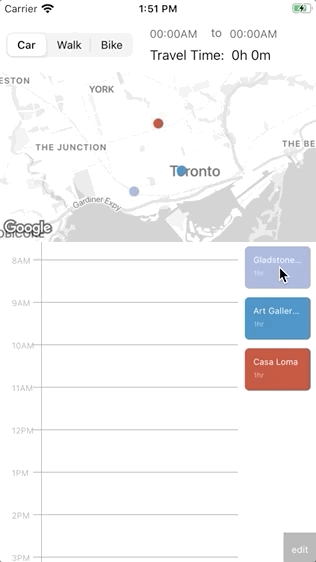
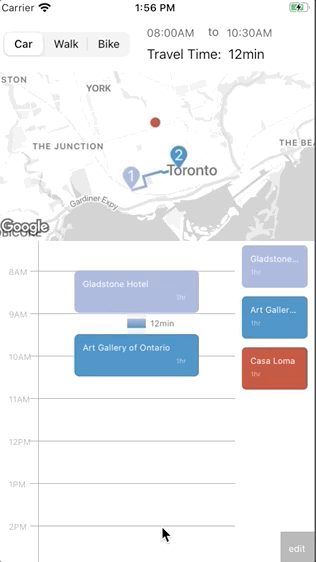
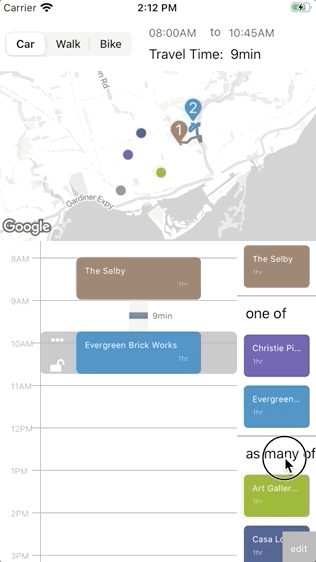
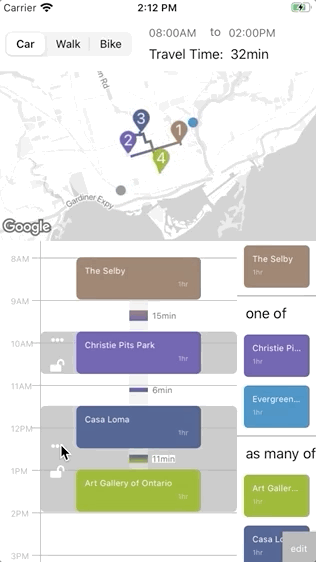
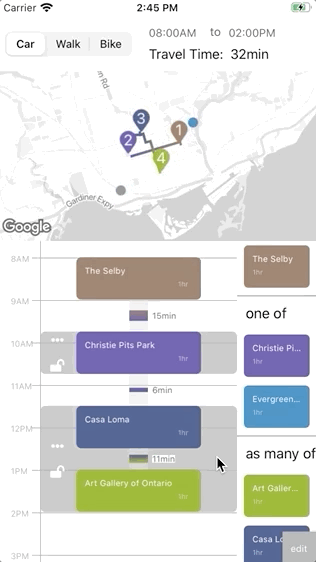
If you'd like to learn more, including a proper demo of the app and a deeper dive on all the research details, the full-length talk is on YouTube. UIST is usually in-person but was held online in 2021, so accordingly, my talk was presented remotely. Have a look!